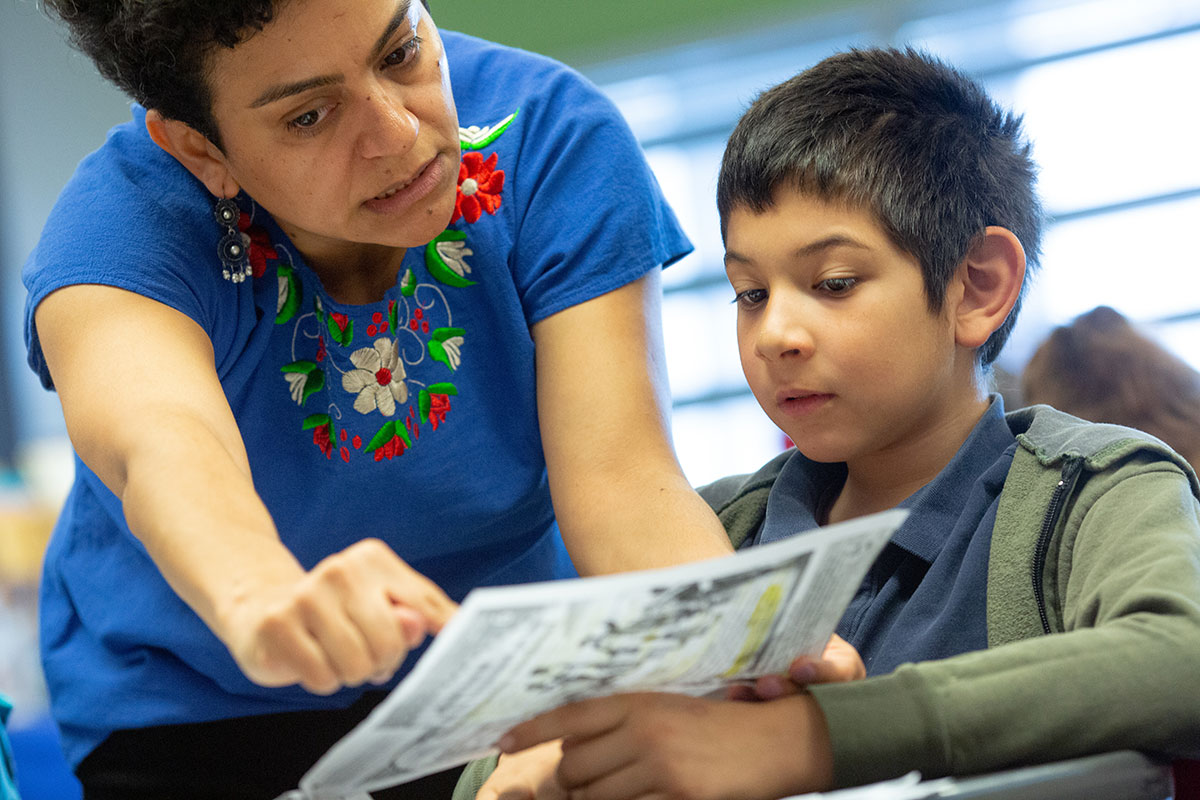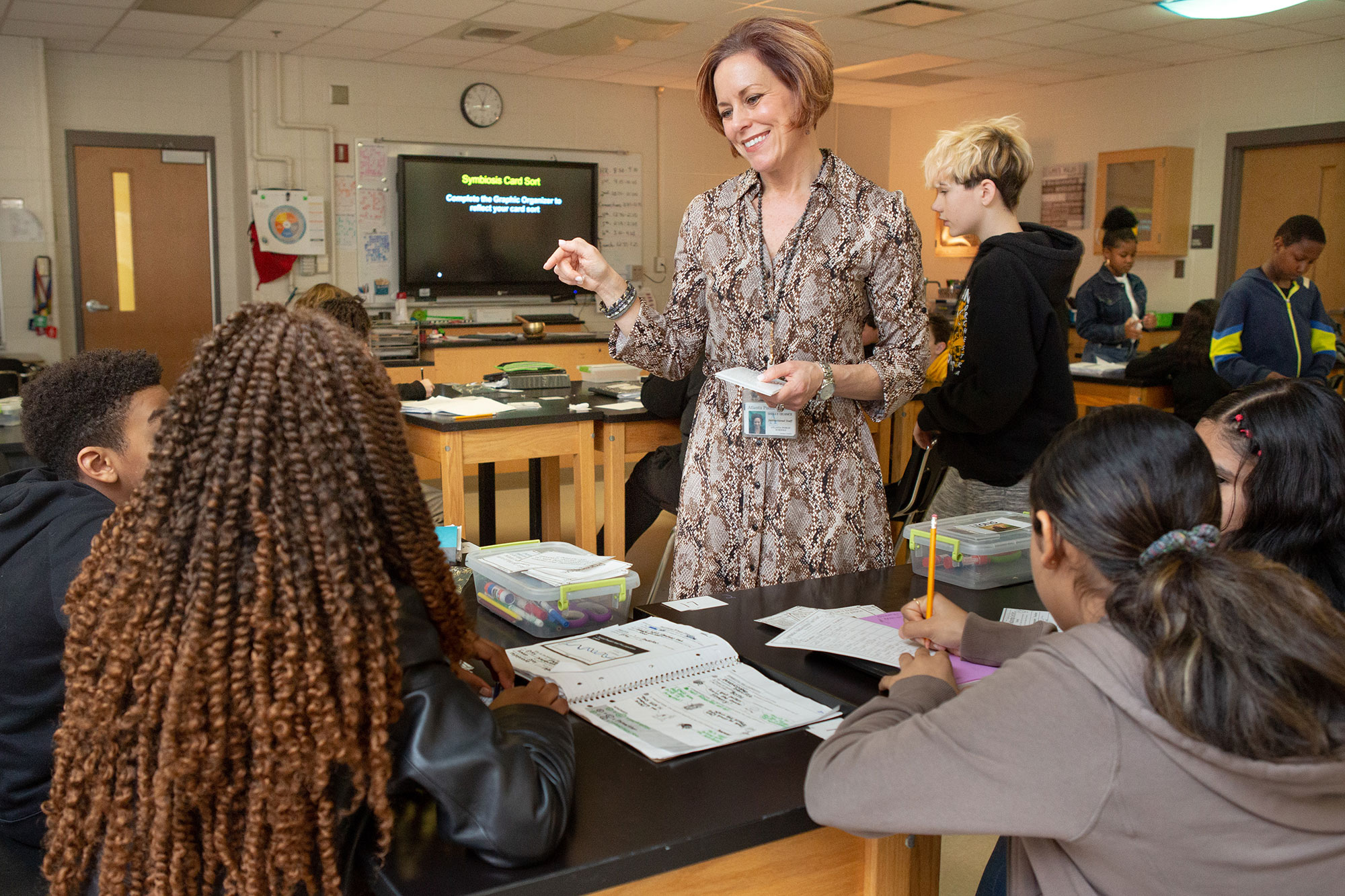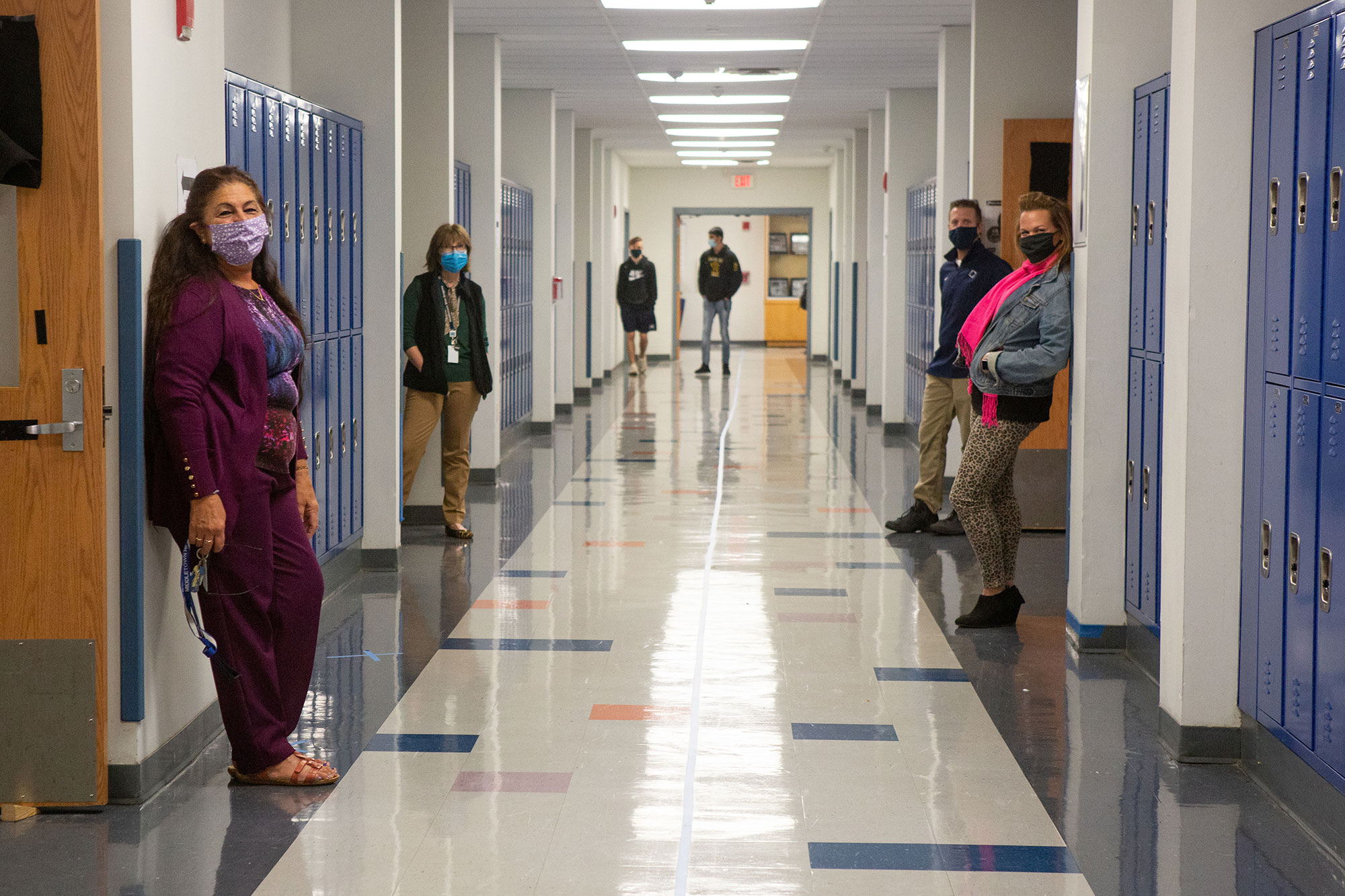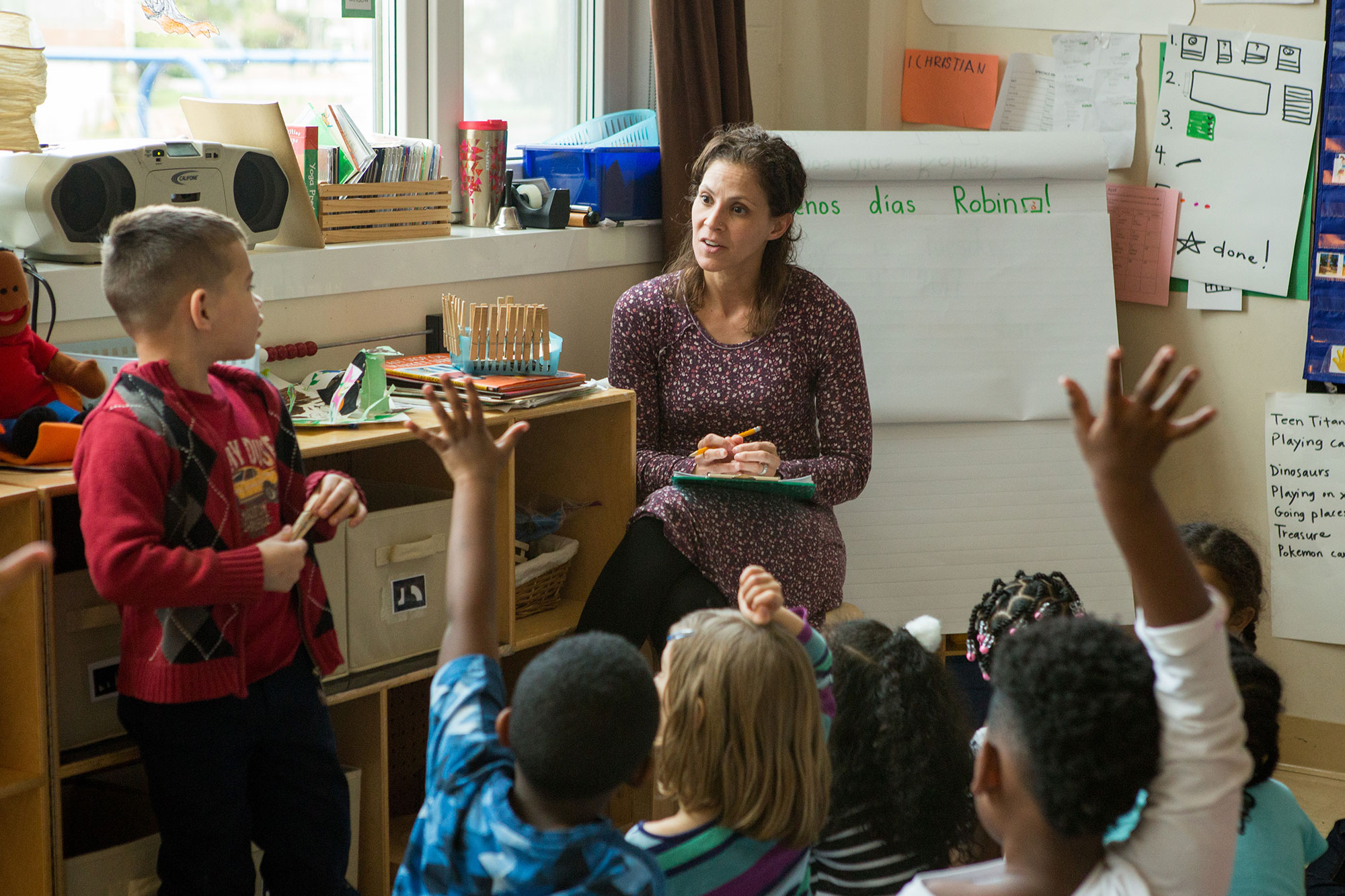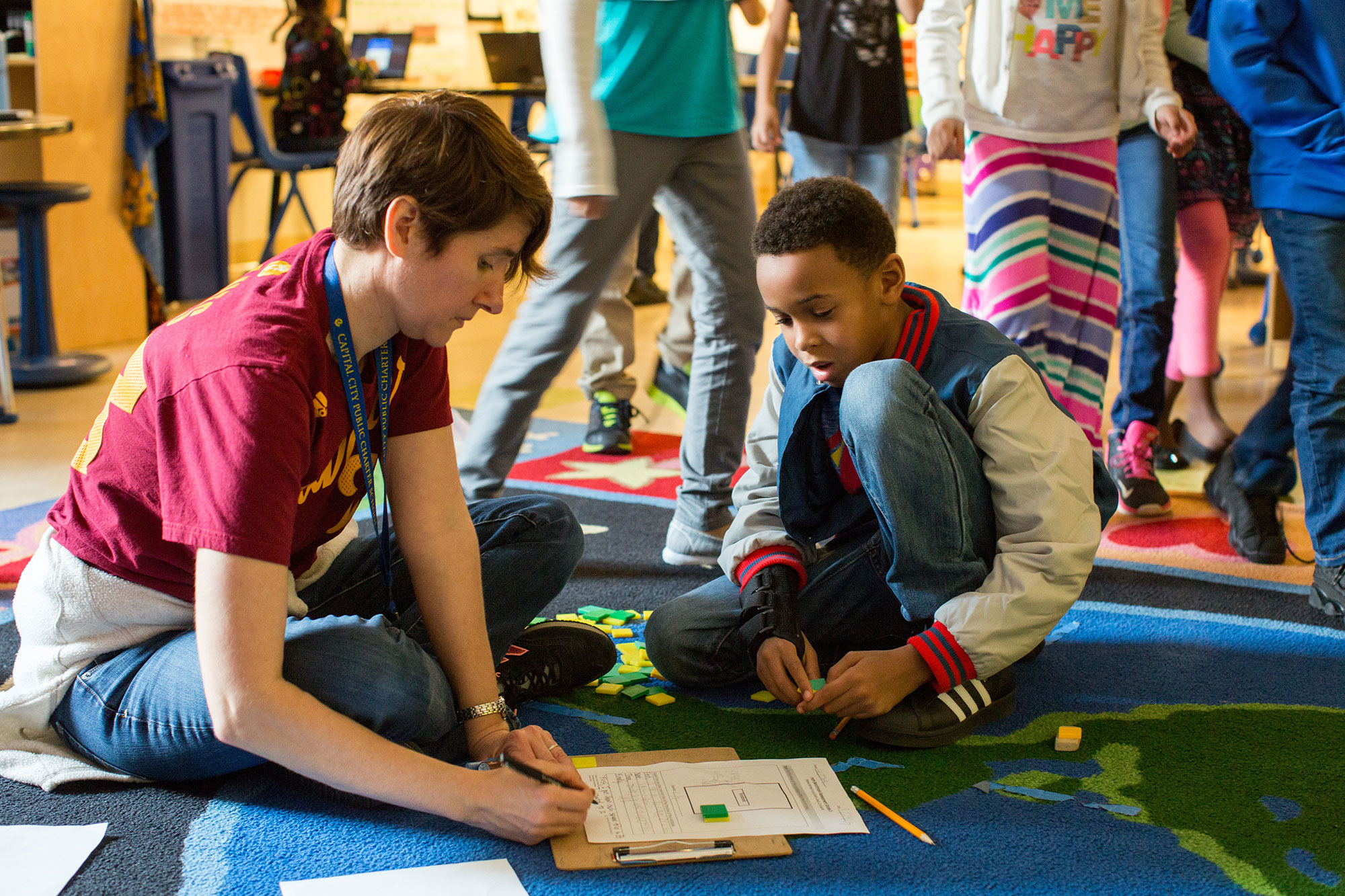Finding 1
Teachers and parents believe that media coverage affects teachers.
Public Agenda’s survey finds that most teachers and parents believe that media coverage has a substantial impact on how much communities value teachers, on government policies that affect teachers, on how teachers feel about their jobs, and on how many people pursue teaching careers.
Finding 2
Newspapers rarely discussed teachers in depth or included teachers’ voices.
Teachers were quoted in about one-quarter of a random sample of news articles about K-12 education in the United States from 2009 to 2020. Just over half of the articles in the sample mentioned teachers, and fewer discussed them in depth, with only about one in five articles mentioning teachers in two or more paragraphs. National newspapers quoted teachers most often in articles about teacher hiring, pay, and labor actions. Local newspapers quoted them most often in articles about teaching, learning, and teacher training. Newspapers rarely quoted teachers in coverage of evaluation of students, teachers, or schools and hardly ever quoted them in articles about school budgets and budgeting.
Finding 3
Newspapers covered non-academic factors that affect learning more than any other topic.
From 2009 to 2020, the topic that national and local newspapers most often covered was the impact of non-academic factors on learning. Non-academic factors include poverty and other issues in students’ families and communities, as well as enrollment, school closures, and access to education. Yet relatively few articles about non-academic factors quoted a teacher. And few of the articles that mentioned teachers portrayed them engaging with these issues. Local and national newspapers covered human resource management related to non-teaching positions—such as electing or hiring school board members, superintendents, and principals—more often than they covered teacher hiring, pay, and labor actions.
Finding 4
National newspapers started covering evaluation less and quoting teachers more around 2015.
Evaluation dominated national newspapers’ coverage of K-12 education in 2010, 2011, and 2014. But by 2016, national newspapers’ coverage of teaching, learning, and teacher training outpaced coverage of evaluation. National newspapers also began to mention and quote teachers somewhat more often starting in 2015. From 2009 to 2020, local newspapers fluctuated less than national newspapers in the topics they covered and how often they quoted and mentioned teachers.
Finding 5
Both local and national newspapers most often portrayed teachers engaged in the work of teaching. National newspapers more often portrayed teachers being evaluated than local newspapers did.
Just over half of articles about education in national and local newspapers mentioned teachers. In both national and local newspaper articles that mentioned them, teachers were most often portrayed engaging in the work of teaching. In national newspaper articles that mentioned them, the second most common portrayal was of teachers being evaluated and the third most common portrayal was of teachers needing or negotiating for more salary or benefits. In local newspaper articles that mentioned teachers, the second most common portrayal was of teachers developing their professional skills and the third most common portrayal was of teachers involved in sports or other extracurriculars.
Finding 6
Depictions of teachers being evaluated in national newspapers began declining after 2015, while depictions of professional development and compensation began increasing.
From 2010 to 2015, national newspaper articles that mentioned teachers frequently portrayed them as being evaluated. But starting in 2016, national portrayals of teacher evaluation declined. By 2017, very few national newspaper articles mentioning teachers depicted them being evaluated, while more showed them engaged in professional development or training. Depictions of teachers participating in labor actions and needing or negotiating for higher salaries were more common in 2018, during strikes and walkouts in several states. Between 2009 and 2020, depictions of teachers fluctuated less in local newspapers than in national newspapers.
Finding 7
In the first year of the COVID-19 pandemic, depictions of teachers changed more in national newspapers than in local newspapers.
In 2020, national newspaper articles that mentioned teachers depicted them engaged in teaching, both online and in person, far more often than in previous years. Compared to previous years, national newspapers in 2020 also more often portrayed teachers dealing with student poverty and behavioral factors that affect learning and portrayed them dealing with administrative decisions that negatively impact students. Portrayals of teachers needing or negotiating for higher salaries declined in national newspapers. Compared to national newspapers, local newspapers’ portrayals of teachers saw relatively little change from non-pandemic coverage through the first year of the pandemic.
Finding 8
From 2009 to 2020, newspapers rarely depicted teacher shortages, lack of classroom resources, or lack of diversity in the profession.
Very few national or local newspapers depicted teacher shortages, teachers lacking classroom resources, or a lack of diversity in the profession. Yet most teachers think it is very important for newspapers to cover these issues.
Finding 9
Depictions of teachers involved in illegal activity were rare, but spiked modestly in certain years.
From 2009 to 2020, few local or national newspaper articles that mentioned teachers portrayed them as accused of or engaged in illegal activities such as sexual misconduct, violence, drug use, cheating on evaluations, or financial misconduct. But those portrayals spiked modestly in 2012 and 2016 in national newspapers and in 2013 and 2016 in local newspapers.
Finding 10
Teachers believe it is important for the news media to cover student poverty, lack of classroom resources, and teacher shortages.
Two-thirds of K-12 public school teachers think it is very important for the news media to cover how student poverty and behavioral problems affect teaching and learning. While this was the most commonly covered topic in both national and local newspapers, those articles rarely included teachers’ voices. Only one-third of teachers think it is very important for the news media to cover how schools decide whether teachers are effectively helping students learn, yet this topic was the second most frequently covered topic in national newspapers.
Implications for Fostering More Insightful Education Journalism
- Create ways for journalists to easily access teachers so that they can more frequently include their voices in education coverage.
- Portray teachers as experts not as problems to be solved.
- Include teachers’ perspectives in articles about student poverty and other non-academic factors that affect learning.
- Provide robust coverage of teacher shortages and lack of diversity in the teaching profession.
- Provide robust coverage of budgets, buildings, and classroom resources.
- Consider what the declining coverage of evaluation means for the future of education and of education journalism.
- Reflect on how education journalism can cover the COVID-19 pandemic as it continues to evolve.

